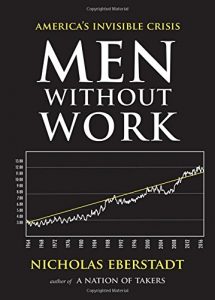TPOH has long advocated maintaining a safety net for those truly in need, but also supporting work as a means to build value in one’s lives and in the lives of others. Work provides meaning and purpose, despite those who wish to argue otherwise.
So it’s refreshing to read a strong rebuttal to a shocking claim that suggests proposed changes to the food stamp program will force people to hunt squirrels for food. Turns out such hyperbole doesn’t stand up to the evidence.
The Washington Post reported in a story last week that a Navy veteran was forced to catch, skin, and eat squirrels cooked on a flame nearby the tent where he lived in Augusta, Maine after the state tightened its work requirements for recipients of the social safety net. The newspaper than suggested that President Trump’s federal budget proposal mimics the Maine plan, and could jeopardize poor people.
But political commentator Marc Thiessen, a former speech writer for President George W. Bush, cleared up the Post’s misconceptions.
First of all, under federal law, work requirements only apply to able-bodied adults without dependents (ABAWDs). So if a person is truly disabled, he or she would not be subject to work requirements.
Second, the work requirements are not all that stringent. Able-bodied adults can received three months of food stamp (Supplemental Nutrition Assistance Program – SNAP) benefits in a 36-month period, after which they have three options for fulfilling their work requirement:
1. Work a paying job for at least 20 hours per week
2. Participate in a federal or state vocational training program for at least 20 hours per week.
3. Perform 6 hours of community service per week.
This means that in order to be forced to hunt squirrels for food, you’d have to refuse not only to work, but also to participate in work training, or to volunteer for the equivalent of just one hour per day. If you are able enough to hunt and skin squirrels, you’re probably able enough to meet those minimal requirements.
Thiessen then explained that the state helps those who are bound to the work requirement with resumé building, job interview training, support coaching, and even providing volunteer opportunities.
As a result, Maine’s food stamp roles plummeted by 86 percent while its able-bodied adults experienced an average 114 percent increase in income!
Forbes magazine reported that people who relied on the program saw their average benefits drop 13 percent because they ended up needing less assistance. The work requirement ended up reducing the cost of the food stamp program by $30-$40 million annually.
As Thiessen explains:
In other words, work requirements in Maine have been a huge success. Far from hunting varmints, most people have found work. And – here’s the important part – work is what most people on food stamps really want. …
Thiessen explained that a similar case occurred in New York City under Mayor Michael Bloomberg, and it was reported that while people in the program expressed that the EBT card is nice, they preferred a job. Implementing the work requirement took New York City from having one of the nation’s highest poverty rates to one of the lowest.
To claim that work requirements are somehow cruel is to deny individuals the opportunity to achieve something self-made, an outcome that satisfies an internal need for fulfillment, not just a need for a full belly.
Some oppose work requirements because they see them as a way to punish welfare recipients or deny them benefits. But work is not a punishment. Work is a blessing. And work requirements are a critical tool to help rescue our fellow Americans from the misery of idleness – so they can achieve meaning and happiness in their lives through the power of honest, productive work.








